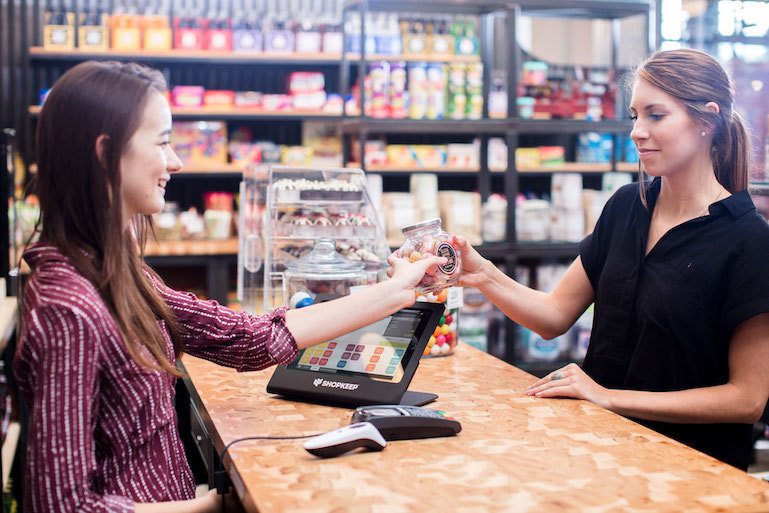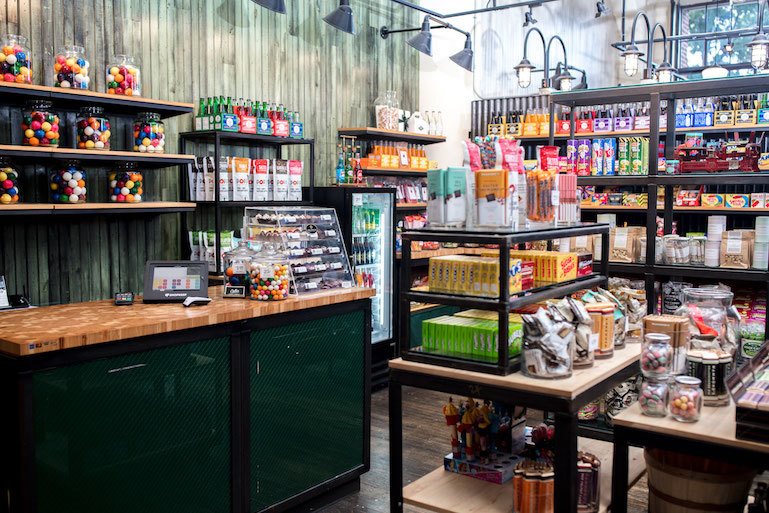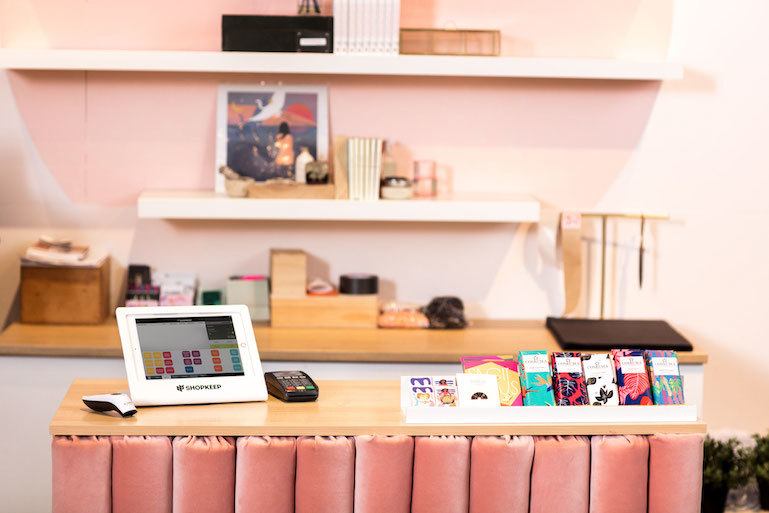
How to Handle Long Lines And Keep Customers Happy
You’ve been there as a customer. It’s the classic customer service scenario. You’re stuck in a long line with your purchases, silently urging the cashier to move faster.
As a small retail store owner, you’ve been on the other side of this scenario as well. Scrambling to provide service to your customers as quickly as possible, dealing with rude customers and hoping that your patience will last longer than your current average wait time.
All jokes aside, we understand how frustrating this experience can be for you and your customers. Quality customer service is king and this post will prepare you to accommodate a high volume of customers and long wait times while keeping customers happy.
Leverage Multiple Registers
It’s common for larger retail stores to have multiple registers, many of which aren’t in use at the same time. Part of effective queue management is monitoring the cash wrap and requesting register back up when long retail queues start to form.
If you’re set up with multiple registers, implement a policy to open up the extra registers when three or more customers are lined up.
Pro Tip: Turn your extra registers on and lock a loaded cash drawer in the till when the store opens so you’re ready to go when your lines get backed up. You or your employees will only need to log into the point of sale (POS) terminal to open the register and start serving shoppers.
When managing your store’s queue, it’s also important to influence your customers’ perception of their waiting time. Studies show it’s boredom, not just the waiting, that leads to frustration during a customer’s shopping experience.
Make sure that your customers are aware that you’re trying to serve them as quickly as possible. For example, when you open a new register, you should announce that you are forming a second line and let the customers know where they should go to expedite their service.
Line-Busting for Retail Line Management
If you run a retail business with a decently sized sales floor, consider investing in a mobile point of sale (mPOS) system that runs on an iPad or Android tablet. An mPOS allows you to equip your salespeople with tablets that can be carried around with them when helping shoppers.
Once a shopper is ready to make a purchase, the salesperson can ring them up right on the sales floor, eliminating long wait times. Not only does this help to reduce the amount of customers in your queue, but it can prevent a line from forming in the first place, while providing plenty of upselling opportunities.
Clearly Define Your Queue
You’ve probably seen it many times, customers leisurely browse and shop, but when they’re ready to pay and leave, they either can’t seem to locate the register or they aren’t sure how to pay. This leads to irritation and confusion that can eventually give your business a bad reputation, severely impacting customer loyalty.
Simplify the shopping experience by placing a sign above your counter, POS, or cash wrap so that customers can clearly see where to pay. If you’re a smaller establishment and don’t have a dedicated cashier to staff the register, train your employees to clearly communicate the checkout location to all shoppers that enter your store.
There are several non-verbal cues customers give when they’re done shopping. Checking price tags, fumbling for a wallet or purse, and looking around with a determined expression while they’re trying to find a clerk or cash register are common ones. Your employees can ask shoppers if they’re ready to pay, and personally guide them to the checkout location.
Larger retail shops often use portable barriers to create a path toward the cashier. Make sure that you’ve placed signage at the end of the line, so customers know where to queue up, as well as one at the mouth of your path, instructing them to wait for the next available clerk. Clear signage (and barriers) prevents accidental line-cutting, which is frustrating for potential customers and can increase line abandonment.

Reduce Boredom in Line
Have you wondered why retailers have small shelves lining the check-out area? They are called impulse buy racks. Not only are they a great way for you to boost add-on sales, but they’re also a great way to keep a long line of customers occupied while they’re waiting. After all, you can’t expect them to play on their phones the whole time.
Impulse buy racks are a great place to stock accessories for your wares, from earrings to headphones or socks. Small bins marked with $1 or $5 price tags can be very enticing. As customers wait, they might pick up and examine the merchandise before adding it to their carts or baskets. Using your POS, you can segregate your impulse buy merchandise to spot trends and determine which products work best. That said, make sure these items have security tags to prevent inventory shrinkage due to theft.
SEE ALSO: Retail Merchandising Tips and Tricks for Growing Your Business
Acknowledge Waiting Customers
Train your staff to professionally and courteously acknowledge all waiting customers by making eye contact and smiling at those in line. Studies show that this reduces customer irritation and increases their patience.
By making this non-verbal connection, your employees are ensuring that your customers are noticed. Once each customer gets to the front of the line, the cashier should be trained to genuinely thank the customer for their patience before beginning the transaction.
Part of your service training also should include teaching your cashiers to give their complete attention to the customer in front of them. Although an employee’s first instinct might be to hurry through each transaction, giving your customers the impression that they’re being rushed implies that you don’t care about your customer’s happiness.
Instead, coach and rehearse different customer service scenarios with your cashiers, giving each customer your full attention during the check-out experience and thanking them for their patience, so that they feel like their business is valued.
In today’s cluttered retail environment, your customers have plenty of options. A pleasant customer experience can literally make or break your business. In fact, nearly 73% of customers who leave do so because they are dissatisfied with the interaction they experienced.
Have a Back-Up Plan for Difficult Transactions
One thing guaranteed to hold up the line is a snafu at payment time. Whether it’s because a customer’s card is declined or they’re hunting for an elusive coupon, a painfully slow customer can fuel the impatience of those standing in line behind them.
As a store owner or manager, keep a careful eye on swelling checkout lines. If there is difficulty with a transaction, offer to take the customer to another register and personally handle the problem. Whether it’s making a call to the credit card’s merchant services department or helping them find the coupon they’ve misplaced, your number one priority should be to do all that you can to eliminate friction during the customer journey.
While difficult customers are part of the job, most of the time the rudeness stems from impatience and feeling as if their frustration is misunderstood. Having processes to tackle these types of problems quickly improves the customer experience and promotes a good work environment for staff members.
Your portable checkout device may come in handy here, as well. Hand the mobile register to your cashier so they can pull the customer off the line and handle the transaction on the side.
A personal touch like this goes a long way, not just for the difficult customer, but also for those watching how you, the owner, handles the situation. Your personal attention to one individual, while ensuring that the rest of your customers are able to pay swiftly, can speak volumes about the value you place on each shopper, improving customer loyalty long term.
Consider empowering your employees to honor expired coupons (within reason) or make adjustments if a customer is especially difficult. Giving your staff ownership when solving problems makes them more engaged with your business.
When your staff knows how to solve customer difficulties without waiting for managerial direction, it also helps ensure that your lines move faster.
SEE ALSO: Retail 101: How to Set Up a Retail Business for Success
Hold Times – What Happens When the Phone Rings
Although most of your business’s information may be easily accessible on your website, customers will still call you with questions. Customers phoning your store often have a specific purpose, so making sure they don’t have to wait a long time for answers can mean the difference between them deciding to purchase from you or to buy from a competitor.
One or two minutes can feel a whole long longer to the person waiting on the other end of the phone, so it’s important to set a policy regarding appropriate wait times. If your employee is having trouble getting the answer to the customer’s question, instruct them to pick up the phone, apologize for the wait, and inform the customer that their query is taking longer than anticipated.
It’s important to ensure that customers don’t feel as if they’ve been forgotten or dismissed. Once your employee has the answer, don’t forget to have them thank the customer for their patience. Noticing a trend here?

Use the Right Technology
The type of POS you choose can have a profound effect on your ability to bust through lines quickly. Carefully entering each item in your inventory, as well as properly indicating sale prices and specials, means your staff can process purchases quickly and cut down on price checks or confusion about marked sales.
Keeping a customer database of purchases, both as a sales tool for offering selected promotions and as a reference for returns, is another way you can cut down on long wait times. With the right POS technology in place, employees can easily access a customer’s past purchase history, look up loyalty rewards, or apply eligible discounts.
Reliability is key to determining which POS to invest in. Make sure that your POS is intuitive and easy-to-use to streamline new hire training and facilitate faster transactions.
Consider investing in POS technology that enables you to take offline transactions and always have a backup plan. Power interruptions, system failures, and emergencies will happen. It’s one of those scenarios all retailers eventually face no matter how reliable their POS or payments provider is.
Having a plan in place before anything goes wrong and thoroughly training your staff on how to implement it can save you a day’s worth of business. Yup, this is when the old knuckle-buster credit card imprinter and other traditional methods can serve as a life-line during the worst case scenario.
Want to try ShopKeep for yourself?
Just answer a few easy questions.
Need help finding the right point of sale?
Just complete the form. We’ll call you right back to explain how ShopKeep can work for you.
Hit the ground running.Sprinting, in fact!
Read our free, comprehensive guide, Small Business 101, to learn all you need to know about starting a thriving business.

